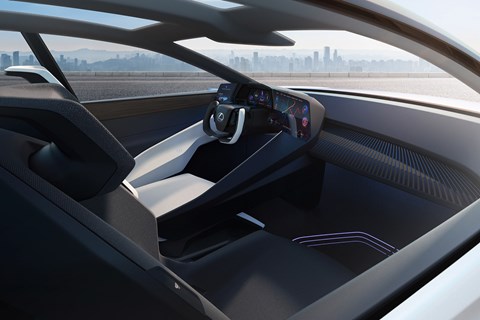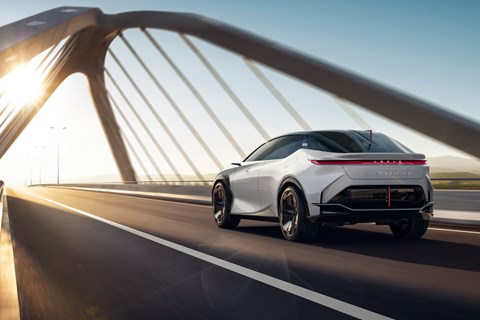► New concept showcases new look and fresh thinking
► LF-Z also previews first ground-up EV
► 10 electrified cars to come by 2025
The new LF-Z Electrified concept from Lexus highlights a bolder approach from Toyota’s luxury brand as it increases the pace of change to a more electrified future.
It’s been designed from scratch as an electric car – unlike Lexus’s first electric production car, 2020’s UX300e, which shares its body with the hybrid version. The LF-Z’s battery is mounted longitudinally in the floor and the electric motors built into the axles, giving a roomy interior and making this the first Lexus with no grille, as the design team in Japan has explored the freedom offered by losing the combustion engine in the nose. It’s not far from 2019’s wilder LF-30 concept, with a similar low-nose/pointy-rear look.
But Lexus says the LF-Z is not intended to preview one particular production model. Rather, its look, its technology and its philosphy will feed into the 10 new or updated hybrid or electric models Lexus is promising by 2025, as part of a major overhaul of the range. But the concept does preview a welcome shift of cabin priorities: it’s light and airy, with the controls positioned low down and the driver’s view uninterrupted, helped by an augmented-reality head-up display.
Lexus says the driving experience should be in line with its ‘tazuna’ philosophy of intuitive car control, modelled on the way a rider and horse are connected with just a single rein. The concept’s cabin uses artificial intelligence to learn the driver’s preferences and minimise the amount of time with eyes off the road.

The notional capacity of the LF-Z Electrified concept’s lithium-ion battery is 90kWh, giving a range of around 370 miles. Power output is 536bhp, and torque 516lb ft, for a top speed of 124mph and a 0-62mph time of 3.0 seconds.
It has a bespoke EV-only platform, all-wheel drive, steer-by-wire (with no physical connection between the steering wheel and the wheels) and Direct 4, the Lexus technology unveiled last year for dynamic handling of hybrids and EVs. It precisely controls the delivery of torque from front and rear electric motors and braking force to all four wheels.
It’s longer and slightly taller than a Jaguar i-Pace, and fractionally lighter at 2100kg.
As part of its rebirth, Lexus is establishing a new development centre at Toyota’s Shimoyama test track, to centralise its design, tech, planning and testing work. It will be designed for more collaboration with outside partners and more remote working, as well as aiming for carbon neutrality in line with the company’s green ambitions.

Chief engineer Takashi Watanabe says: ‘It’s a representation of how the brand intends to transform in the near future.’ It’s a near future that will include electrified performance cars as well as new saloons and SUVs.
He stressed that this was not the start of an electric-only phase for Lexus. In some markets, hybrids would continue to make more sense. And other possibilities, including hydrogen fuel cells – as seen in Toyota’s Mirai – were being explored.